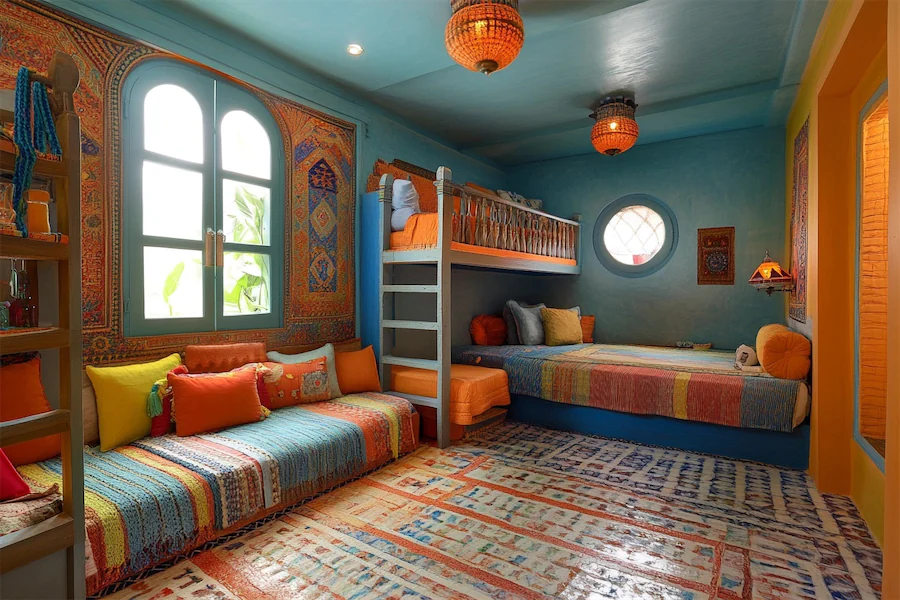A Moroccan kid’s room incorporates the exotic allure of Moroccan design, known for its vibrant colors, intricate patterns, and luxurious textures. By integrating elements such as bold hues, geometric patterns, and handcrafted furniture, you can create a space that is both culturally enriching and playful, catering to a child’s imagination and comfort.
History and Origins of Moroccan Design
Moroccan design is a fusion of African, Arab, and Mediterranean influences, reflecting the country’s rich cultural heritage. This style is renowned for its intricate architectural features, such as elaborate carvings, vibrant tile work, and complex patterns. Incorporating these elements into a child’s room brings a sense of global awareness and appreciation for diverse artistic traditions.
Key Features of Moroccan Kid Rooms
- Vibrant Color Palette: Utilize rich hues like deep blues, vibrant reds, and earthy oranges to infuse energy and warmth into the room. These colors can be balanced with neutral tones to maintain harmony.
- Intricate Patterns and Textiles: Incorporate geometric patterns and luxurious fabrics through bedding, rugs, and curtains to add depth and visual interest. Layering different textures creates a cozy and dynamic space.
- Handcrafted Furniture: Select furniture pieces featuring ornate carvings and traditional craftsmanship to add authenticity and elegance. Handcrafted wooden beds or dressers can serve as focal points in the room.
- Decorative Lighting: Use Moroccan-style lanterns or pendant lights to create a warm and inviting ambiance. Soft, diffused lighting adds to the room’s mystical and enchanting feel.
Applications of Moroccan Design in Kid Rooms
- Themed Decor: Incorporate elements like star motifs, vibrant wall art, or Moroccan-inspired canopies to create a magical and adventurous atmosphere.
- Functional Layouts: Designate areas for play, study, and rest, ensuring the room is both practical and aesthetically pleasing. Soft rugs and playful décor make the play area inviting, while a cozy study corner promotes learning.
- Cultural Touches: Incorporate traditional Moroccan patterns and handcrafted accessories to give the room an authentic, cultural feel while ensuring it’s child-friendly.
Considerations When Designing a Moroccan Kid Room
- Safety: Ensure all furniture and decorative items are child-safe, with no sharp edges or hazardous materials. Opt for non-toxic paints and finishes.
- Durability: Choose durable materials that can withstand the wear and tear of a child’s activities. Sturdy wooden furniture and high-quality textiles are advisable.
- Personalization: Incorporate the child’s interests and preferences into the design, allowing for a personalized and engaging space. This could include favorite colors, themes, or interactive elements.
Conclusion
Creating a Moroccan-inspired kid’s room blends cultural richness with playful design, resulting in a space that is both educational and enchanting. By thoughtfully integrating vibrant colors, intricate patterns, and handcrafted elements, you can craft a room that inspires creativity and provides comfort for your child.
